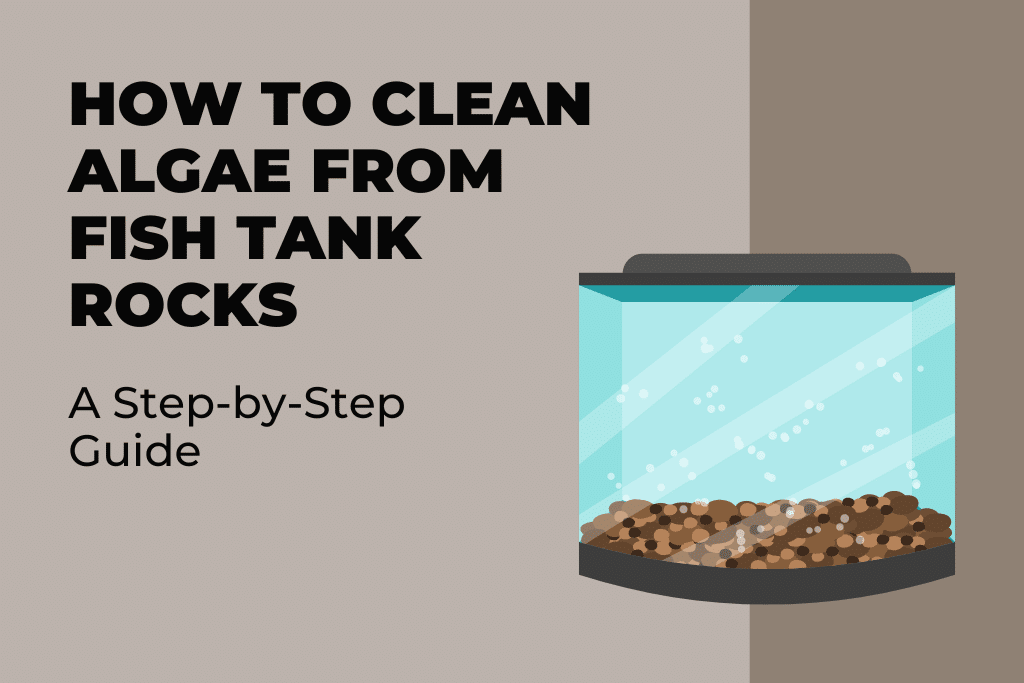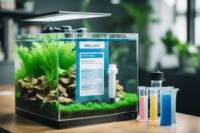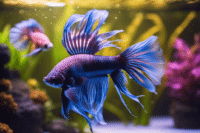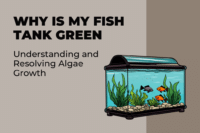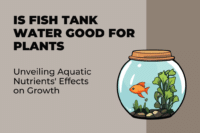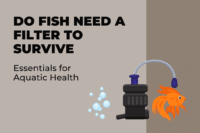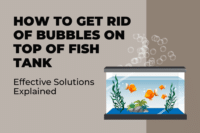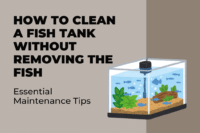Maintaining a clean and healthy aquarium environment is essential to aquatic life’s wellbeing. Algae buildup on surfaces inside your tank – including rocks – is both unsightly and dangerous to aquatic organisms, depriving oxygen levels in your fish tank of vital o2 supplies while releasing toxic substances into its ecosystem. Although an accumulation of algae signals a functioning ecosystem within it, too much may cause imbalances that need correcting regularly.
Maintaining an optimal aquarium ecosystem means understanding how to effectively remove algae from tank rocks, without disrupting its delicate balance or disrupting fish health, is paramount to success and should become part of routine maintenance and preventative measures in order to keep tanks clear and fish thriving. Regular removal should help preserve clarity within an aquarium ecosystem as well as ensure healthy environments for inhabitants residing inside.
Key Takeaways
- Regular tank rock cleanings are key for creating an optimal aquarium ecosystem, and must include effective algae removal that protects aquatic environments.
- Preventative maintenance strategies and preventative strategies may limit future algae growth as well as understanding what causes it.
Understanding Algae in Your Aquarium
Algae may appear unwelcome in aquarium environments, yet understanding their types and causes for growth is vital to creating a balanced tank environment.
Types Of Algae Common To Fish Tanks
Green Algae: Green algae is one of the most prominent types found in aquariums and an indication of high-quality water conditions. Often manifesting itself in form of green film coating tank surfaces.
Blue-Green Algae (Cyanobacteria): Although not technically classified as algae, blue-green algae is actually an organism with photosynthetic capabilities that produces photosynthates that form slimy blankets on surfaces and release an unpleasant odour when disturbed.
Brown Algae: Most likely found in newer tanks, brown algae typically thrive under lower light levels and usually indicate silicates or nitrates present in the water.
Causes Of Algae Growth
Light: Too much sunlight or artificial lighting can trigger an algae bloom and dramatically increase their population, prompting rapid proliferation.
Nutrients: Algae thrive in waters rich in nutrients such as nitrates and phosphates that accumulate as the result of overfeeding or lack of maintenance.
Understanding how light and nutrients interact in an aquarium is crucial in controlling algae blooms and keeping a clean aquarium environment. Monitoring is necessary in preventing future blooms of unwanted growth.
Preparing For The Cleaning Process
Before undertaking an algae cleaning task, it’s crucial to have all necessary supplies on hand and take necessary safety precautions. A systematic approach not only ensures efficiency but also keeps both cleaners and aquatic life safe.
Supply Gathering Activities
Start off by gathering all necessary supplies:
Buckets for aquarium use help prevent contamination.
Scrub Brush: Small brushes equipped with plastic bristles can easily reach crevices within your tank’s structure and be an invaluable aid when reaching deeper locations.
Siphon: Useful for water changes as well as cleaning debris out from beneath its substrate surface.
Cleaning Agents: Select from vinegar, bleach or hydrogen peroxide as your cleaning agents; however do not combine any of them together.
Proper utilization of cleaning supplies can dramatically speed up and simplify the cleaning process, such as immersing rocks in dilute vinegar solutions to effectively eradicate any algae build-up on their surfaces.
Safety Measures to Take When Cleaning
Safety should always come first: Adherence to safety precautions should always come first.
Precautions When Utilizing Bleach: For best results when working with bleach, ensure the room is well ventilated, gloves should be used to protect the skin, and always diluted using the 1:10 bleach-to-water ratio, and rinse rocks afterward to complete cleaning process.
Handling Vinegar: When handling vinegar, no ventilation is needed; however, care must be taken in rinsing rocks well to reduce pH fluctuations within the tank and help ensure optimal results.
After using any cleaning agent, fish must be thoroughly rinsed to eliminate harmful residues and ensure optimal outcomes. A step-by-step guide should be utilized in this endeavor to make certain each step has been effectively addressed.
Clean Your Carpet Step-By-Step Guide
Maintaining the health and beauty of an aquarium requires that rocks and decorations remain clear of algae growth. A systematic cleaning program not only ensures efficient removal but also helps preserve its delicate ecosystem.
Remove Algae From Aquarium Rocks
At first, carefully remove rocks from your tank without disturbing fish and plant life too much. Use an algae scraper to scrape away algae build-up on rocks; for persistent instances submerge rocks for short periods in either hot water or mild vinegar solutions (1 part vinegar to 2 parts water) which helps loosen existing slime layers or disinfecting solutions (1 part vinegar:2 parts water). With regards to vinegar solutions, make sure they’re rinsed with dechlorinated water afterward to make sure no residual vinegar lingers, which could harm aquatic inhabitants in turn.
Note: Bleach solutions may also be used, though these require extra caution and need to be used with great care. A dilute bleach solution (1 part bleach to 10 parts water) should provide more thorough cleaning results; after using bleach it’s important to soak your rocks in dechlorinated water (perhaps adding dechlorinator for additional safety), in order to neutralize any residual bleach residues and restore rock surfaces to their original state.
Cleaning The Tank And Switching Out Water Sources.
As soon as algae have been removed from rocks, it is advisable to perform a partial water change and clean your tank using a gravel vacuum to clear away debris and waste from its substrate – this helps prevent future outbreaks of the condition. In terms of volume of change: remove between 25-50% from tank’s current volume before replenishing with fresh water that meets both temperature requirements as well as treated to remove chlorine or chloramine content.
Regular aquarium maintenance such as water changes and cleaning of aquarium rocks and decorations are crucial in controlling algae growth and creating a vibrant aquatic environment.
Maintaining the Ecosystem After Cleaning
After Cleaning an Ecosystem, It Is Essential To Continue Its Upkeep In Order for its optimal functioning and survival.
Cleaning rocks in a fish tank to control algae growth is important, but what comes afterward can be just as critical in order to preserve fish and plant health. Following are various procedures geared toward stabilizing the aquatic environment to preserve it for future use by fish and plants alike.
Restoring Water Parameters
Once cleaning has taken place, it’s essential to restoring water parameters suitable for its inhabitants by balancing pH, ammonia, nitrite and nitrate levels back within optimal ranges. Dechlorinated water should always be used when refilling tanks as chlorine can harm fish as well as beneficial bacteria essential in supporting nitrogen cycling processes. A test kit should also be utilized regularly so as not to cause stress or harm to aquatic life in your tank.
Reintroducing Fish And Decorations
Once water parameters have been checked for stability, gradually reintroducing fish should begin. Start by keeping them in their transport containers until allowing them to adjust by floating on the surface of the tank for several days prior to release them into their new environment. Decorations play a pivotal role in marine environments by providing hiding spots or helping hide other species; make sure these pieces match up to previous layout for minimum stress on fish while making sure any cleaning agents used have been fully removed by hand before replacing anything new into it.
Prevention of Algae Buildup
Keep an aquarium free from algae requires regular care. By developing habits for maintenance and controlling feeding and lighting levels, one can significantly decrease the likelihood of it taking hold in their aquarium.
Regular Aquarium Maintenance will extend its life.
Regular cleaning of fish tanks is key to avoiding algae build-up. Regular check-ups to scrub or scrape away visible algae should also take place to combat its accumulation on rocks, while performing 10-15% water changes each week helps improve water quality by decreasing nutrients that enable algae blooms and keeping levels down; gravel vacuum cleaners can further help remove substrate during water changes to minimize chances of build up of any kind.
Controlling Feeding And Light Exposure
Overfeeding can contribute to excessive nutrients in a fish tank and contribute to algae growth, so for their own sake and that of their fish they must limit themselves to feeding only as much food as can be eaten within minutes at least twice each day – any leftover food should be removed promptly from their environment.
Appropriate lighting plays an essential part in combatting algae growth. Tanks should receive no more than 8-10 hours of illumination each day and sunlight exposure must be limited or avoided to limit rapid algae proliferation. Timers can help ensure consistent illumination schedules which create less conducive conditions to algae proliferation.
